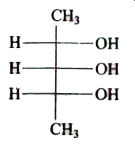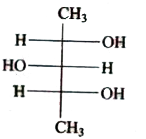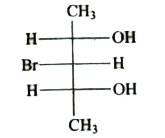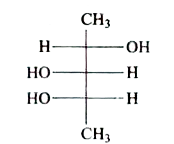Which of the following compounds can have superimposable mirror image?




The correct Answer is:A, B, C
To determine which of the given compounds can have a superimposable mirror image, we need to analyze each compound for the presence of a plane of symmetry. A compound with a plane of symmetry will have a mirror image that can be superimposed onto the original compound.
1. Understanding Superimposable Mirror Images:
- A superimposable mirror image means that when you place the mirror image on top of the original compound, they match perfectly. This typically occurs when there is a plane of symmetry in the molecule.
2. Identifying the Compounds:
- Let's denote the compounds as A, B, C, and D for simplicity. We will analyze each compound for symmetry.
3. Analyzing Compound A:
- Check if a plane of symmetry can be drawn through the compound.
- If a plane of symmetry can be drawn that divides the compound into two equal halves, then it can have a superimposable mirror image.
- Conclusion for A: Yes, it has a plane of symmetry and thus has a superimposable mirror image.
4. Analyzing Compound B:
- Repeat the process for compound B.
- Look for any symmetry that divides the compound into two equal halves.
- Conclusion for B: Yes, it has a plane of symmetry and thus has a superimposable mirror image.
5. Analyzing Compound C:
- Check for symmetry in compound C.
- If you can find a plane of symmetry, it will indicate a superimposable mirror image.
- Conclusion for C: Yes, it has a plane of symmetry and thus has a superimposable mirror image.
6. Analyzing Compound D:
- Finally, check compound D for any symmetry.
- If the positions of the substituents (like OH groups) are different on either side of a potential plane of symmetry, then it does not have a superimposable mirror image.
- Conclusion for D: No, it does not have a plane of symmetry and thus does not have a superimposable mirror image.
7. Final Answer:
- Compounds A, B, and C can have superimposable mirror images, while compound D cannot.
- A superimposable mirror image means that when you place the mirror image on top of the original compound, they match perfectly. This typically occurs when there is a plane of symmetry in the molecule.
- Let's denote the compounds as A, B, C, and D for simplicity. We will analyze each compound for symmetry.
- Check if a plane of symmetry can be drawn through the compound.
- If a plane of symmetry can be drawn that divides the compound into two equal halves, then it can have a superimposable mirror image.
- Conclusion for A: Yes, it has a plane of symmetry and thus has a superimposable mirror image.
- Repeat the process for compound B.
- Look for any symmetry that divides the compound into two equal halves.
- Conclusion for B: Yes, it has a plane of symmetry and thus has a superimposable mirror image.
- Check for symmetry in compound C.
- If you can find a plane of symmetry, it will indicate a superimposable mirror image.
- Conclusion for C: Yes, it has a plane of symmetry and thus has a superimposable mirror image.
- Finally, check compound D for any symmetry.
- If the positions of the substituents (like OH groups) are different on either side of a potential plane of symmetry, then it does not have a superimposable mirror image.
- Conclusion for D: No, it does not have a plane of symmetry and thus does not have a superimposable mirror image.
- Compounds A, B, and C can have superimposable mirror images, while compound D cannot.
Similar Questions
Knowledge Check
Which of the following compounds can exhibit tautomerism?
AC6H5CHOBC6H5−O∣∣C−CMe3CC6H5−O∣∣C−CH2−O∣∣C−HDC6H5−O∣∣C−C6H5Which of the following compound can show geometrical isomerism ?
A B
B C
C D
D
Which of the following compounds can exhibit geometrical isomerism?
AH3C−CH2−CH=CH−CH3B C
C D
D
Which of the following compounds can be hydrolysed?
View SolutionWhich of the following compound can show resonance?
View SolutionWhich of the following compounds can form a zwitterion ?
View SolutionWhich of the following compounds can form a Zwitter ion ?
View SolutionWhich of the following compounds can exhibit enantiomerism?
View Solution
